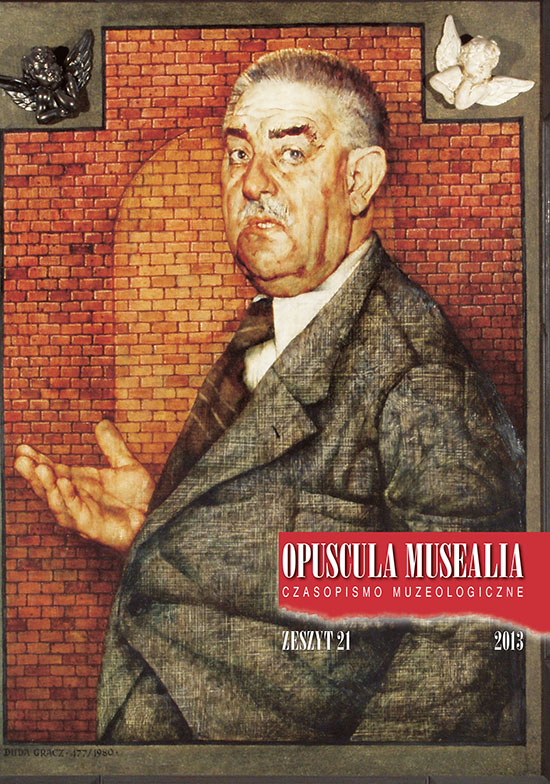Zbiory Przyrodnicze Wydziału Biologii Uniwersytetu im. Adama Mickiewicza w Poznaniu – struktura i funkcjonowanie
Natural History Collections of the Faculty of Biology at the Adam Mickiewicz University in Poznań – structure and functioning
Author(s): Szymon Konwerski, Jerzy BłoszykSubject(s): Museology & Heritage Studies, Classification, Preservation
Published by: Wydawnictwo Uniwersytetu Jagiellońskiego
Keywords: Faculty of Biology UAM; natural collection; science promotion; biodiversity
Summary/Abstract: The Natural History Collections is a museum unit at the Faculty of Biology of the Adam Mickiewicz University in Poznań (UAM), created in 2004. It occupies the space in a separate wing of the Collegium Biologicum at the Morasko Campus. Among the main tasks of the Natural History Collections is gathering, protecting, making available and studying the exhibits as well as research and education activities. The collection originates from Faculties’ documentation (e.g. evidence gathered for diploma dissertations and publications) and other sources (donations of other institutions and individuals). The collection has been divided on the basis of their systematic position and method of keeping the exhibits: herbariums (e.g. a herbarium of tropical plants, moss, lichen and liverwort herbariums), invertebrate collections (e.g. malacological, acarological and entomological collections), vertebrates (e.g. ornithological – including oological, herpetological and mammal collections, paleontological and osteological collections (bone material from archaeological excavations). Part of the collection combines nature, history and culture (e.g. Arkady Fiedler’s entomological collection). An important part of the Natural History Collections’ activity is science promotion with the use of collected exhibits. One permanent exhibition, “The Exhibition of Tropical Plants” is on display. Numerous temporary exhibitions are also organised, usually associated with periodical science promotion events (e.g. the Scientists’ Night, the Biologists’ Night, the Poznań Festival of Science and Art). Extra-curriculum classes for school children are also organised (e.g. on biodiversity at the local and global levels) and specialist training courses (e.g. on entomology in judicial practice and on how to identify protected species).
Journal: Opuscula Musealia
- Issue Year: 2013
- Issue No: 21
- Page Range: 137-144
- Page Count: 8
- Language: Polish

